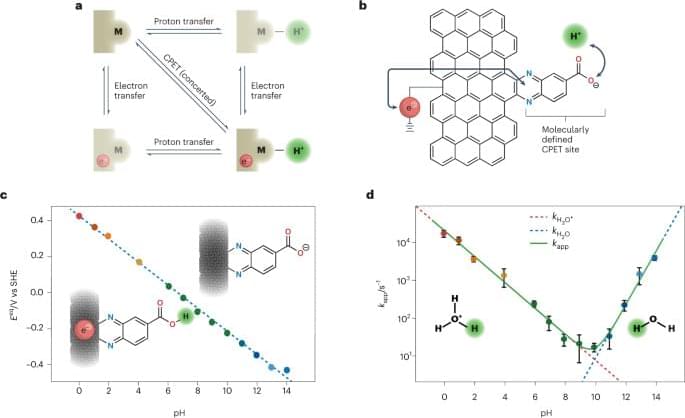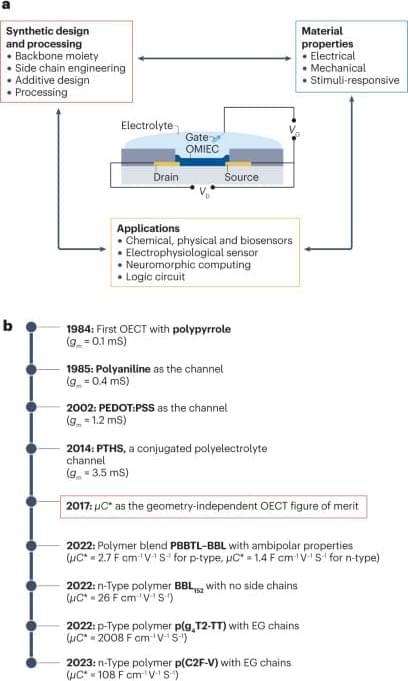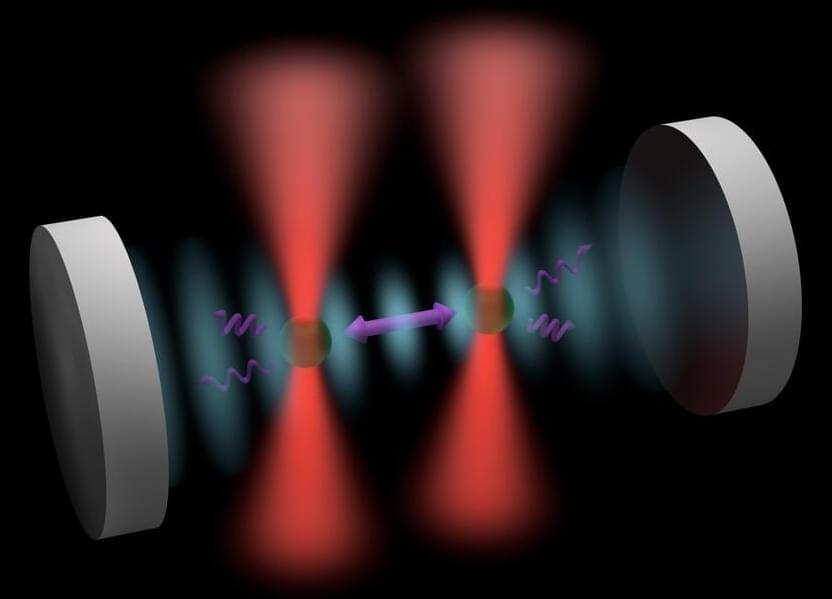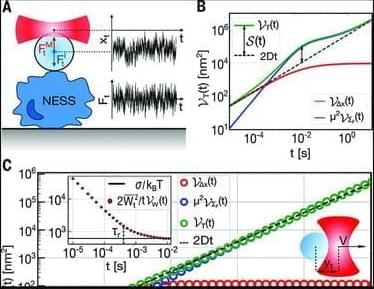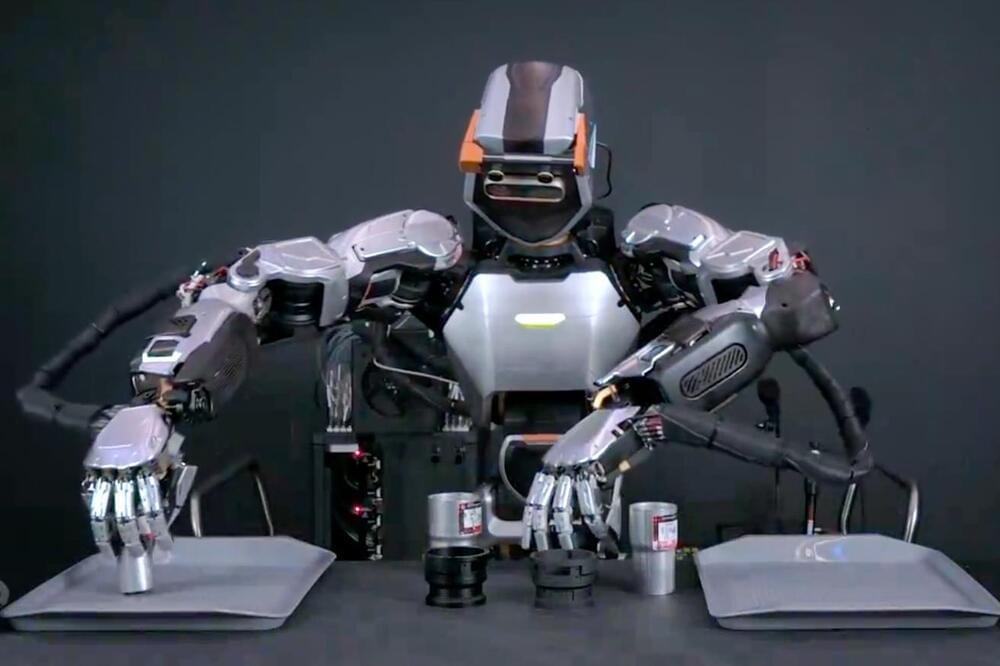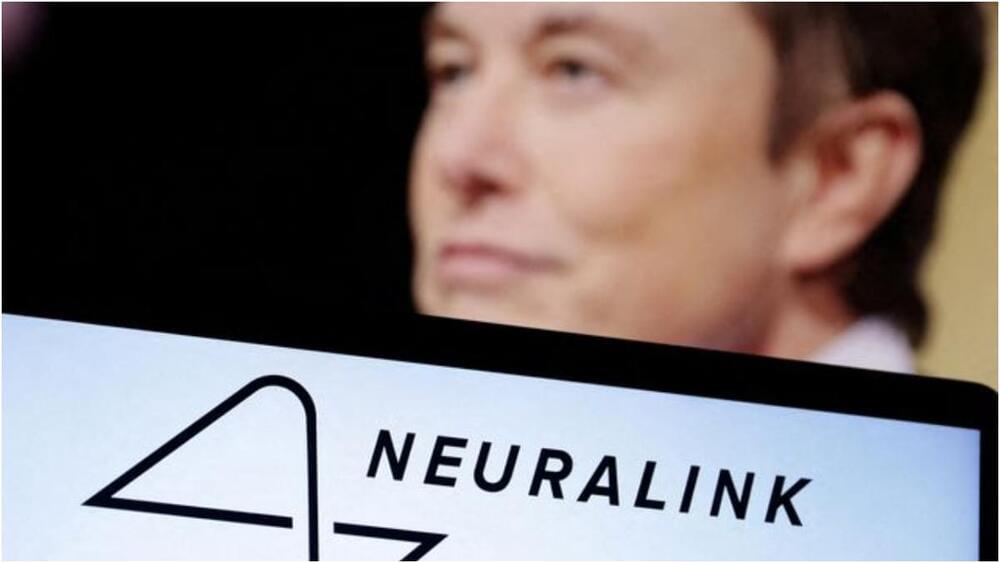Electrocatalytic transformations often involve the concerted transfer of electrons and protons at electrode interfaces; however, these processes are not well understood. Now, experiments on an electrode that features well-defined molecular sites deepen fundamental understanding of such transfers to pave the way for future catalysts.
Nanoparticles (NPs) administered in the human body will undergo rapid surface modification upon contact with biological fluids driven by their interfacial interaction with a diverse range of biomolecules. Such spontaneous self-assembly and adsorption of proteins and other biomolecules onto the NP surface constitute what is commonly known as the protein or biomolecule corona. This surface biotransformation of the NPs modulates their biological interactions and impact on physiological systems and can influence their overall pharmacological profile. Here, we comment on how the initially considered ‘nuisance’ of the in vivo corona formation can now be considered a nanoparticle engineering tool for biomedical use, such as in endogenous tissue targeting, personalized biomarker discovery and immunomodulation.
The organic electrochemical transistor (OECT), with its organic mixed ionic–electronic conductor (OMIEC) channel, serves as an amplifying transducer of biological signals. This Review highlights OMIEC design milestones and illustrates how incorporating specific properties into OMIECs can extend OECT applications beyond biosensing.
There is no doubt that water is significant. Without it, life would never have begun, let alone continue today—not to mention its role in the environment itself, with oceans covering over 70% of Earth.
But despite its ubiquity, liquid water features some electronic intricacies that have long puzzled scientists in chemistry, physics, and technology. For example, the electron affinity, i.e., the energy stabilization undergone by a free electron when captured by water, has remained poorly characterized from an experimental point of view.
Even today’s most accurate electronic structure theory has been unable to clarify the picture, which means that important physical quantities like the energy at which electrons from external sources can be injected in liquid water remain elusive. These properties are crucial for understanding the behavior of electrons in water and could play a role in biological systems, environmental cycles, and technological applications like solar energy conversion.
The question of where the boundary between classical and quantum physics lies is one of the longest-standing pursuits of modern scientific research, and in new research published today, scientists demonstrate a novel platform that could help us find an answer.
The laws of quantum physics govern the behavior of particles at miniscule scales, leading to phenomena such as quantum entanglement, where the properties of entangled particles become inextricably linked in ways that cannot be explained by classical physics.
Research in quantum physics helps us to fill gaps in our knowledge of physics and can give us a more complete picture of reality, but the tiny scales at which quantum systems operate can make them difficult to observe and study.
The entropy production rate is determined from the variances of the position and forces applied to a system of particles.
Gravitationally speaking, the universe is a noisy place. A hodgepodge of gravitational waves from unknown sources streams unpredictably around space, including possibly from the early universe.
Scientists have been looking for signs of these early cosmological gravitational waves, and a team of physicists have now shown that such waves should have a distinct signature due to the behavior of quarks and gluons as the universe cools. Such a finding would have a decisive impact on which models best describe the universe almost immediately after the Big Bang. The study is published in the journal Physical Review Letters.
Scientists first found direct evidence for gravitational waves in 2015 at the LIGO gravitational wave interferometers in the US. These are singular (albeit tiny amplitude) waves from a particular source, such as the merger of two black holes, which wash past Earth. Such waves cause the 4-km perpendicular arms of the interferometers to change length by miniscule (but different) amounts, the difference detected by changes in the resulting interference pattern as laser beams travel back and forth in the detector’s arms.
You’ve seen a ton of videos of humanoid robots – but this one feels different. It’s Sanctuary’s Phoenix bot, with “the world’s best robot hands,” working totally autonomously at near-human speeds – much faster than Tesla’s or Figure’s robots.
Canadian company Sanctuary AI has been accelerating its own progress toward general-purpose humanoids, using teleoperation to show Phoenix how to do things, and letting it go away and figure out more in simulation.
Phoenix is an odd duck in this space, in that the Sanctuary team hasn’t got it up and walking yet, deciding to let others figure that bit out so its team can focus on the nitty gritty of work behaviors. Thus, it sits on a decidedly unsexy wheeled platform, but it has some of the most finely-tuned and human-like hands out of anything we’ve ever seen.
When cosmic inflation came to an end, the hot Big Bang ensued as a result. If our cosmic vacuum state decays, could it all happen again?
Interestingly enough, although Elon Musk’s Neuralink received a great deal of media attention, early in 2023, Synchron published results from its first-in-human study of four patients with severe paralysis who received its first-generation Stentrode neuroprosthesis implant. The implant allowed participants to create digital switches that controlled daily tasks like sending texts and emails, partaking in online banking, and communicating care needs. The study’s findings were published in a paper in JAMA Neurology in January 2023. Then, before September, the first six US patients had the Synchron BCI implanted. The study’s findings are expected by late 2024.
Let’s return to Upgrade. “One part The Six Million Dollar Man, one part Death Wish revenge fantasy” was how critics described the movie. While Death Wish is a 1974 American vigilante action-thriller movie that is partially based on Brian Garfield’s 1972 novel of the same name, the American sci-fi television series The Six Million Dollar Man from the 1970s, based on Martin Caidin’s 1972 novel Cyborg, could be considered a landmark in the context of human-AI symbiosis, although in fantasy’s domain. Oscar Goldman’s opening line in The Six Million Dollar Man was, “Gentlemen, we can rebuild him. We have the technology. We have the capability to make the world’s first bionic man… Better than he was before. Better—stronger—faster.” The term “cyborg” is a portmanteau of the words “cybernetic” and “organism,” which was coined in 1960 by two scientists, Manfred Clynes and Nathan S Kline.
At the moment, “cyborg” doesn’t seem to be a narrative of a distant future, though. Rather, it’s very much a story of today. We are just inches away from becoming cyborgs, perhaps, thanks to the brain chip implants, although Elon Musk perceives that “we are already a cyborg to some degree,” and he may be right. Cyborgs, however, pose a threat, while the dystopian idea of being ruled by Big Brother also haunts. Around the world, chip implants have already sparked heated discussions on a variety of topics, including privacy, the law, technology, medicine, security, politics, and religion. USA Today published a piece headlined “You will get chipped—eventually” as early as August 2017. And an article published in The Atlantic in September 2018 discussed how (not only brain chips but) microchip implants, in general, are evolving from a tech-geek curiosity to a legitimate health utility and that there may not be as many reasons to say “no.” But numerous concerns about privacy and cybersecurity would keep us haunted. It would be extremely difficult for policymakers to formulate laws pertaining to such sensitive yet quickly developing technology.
